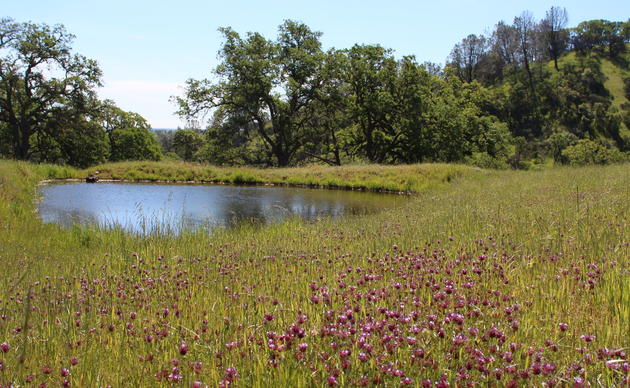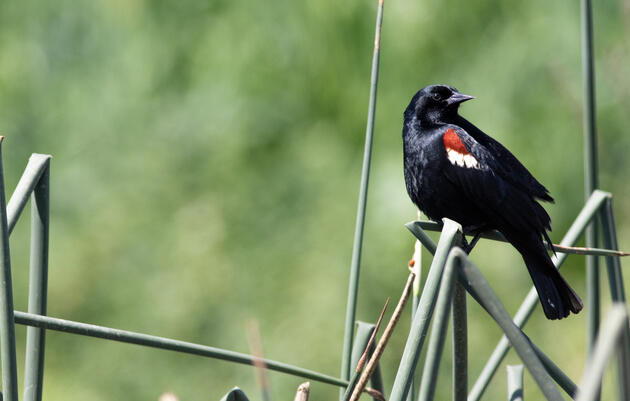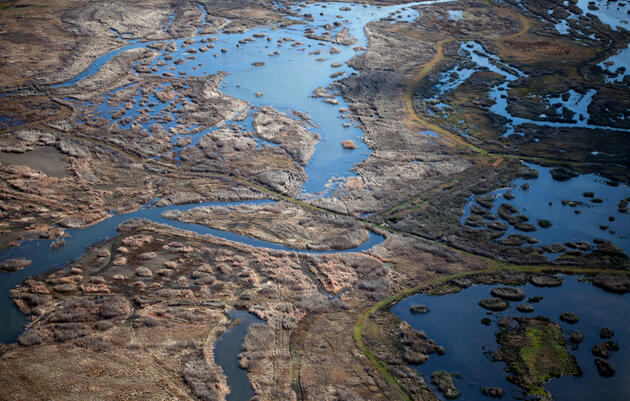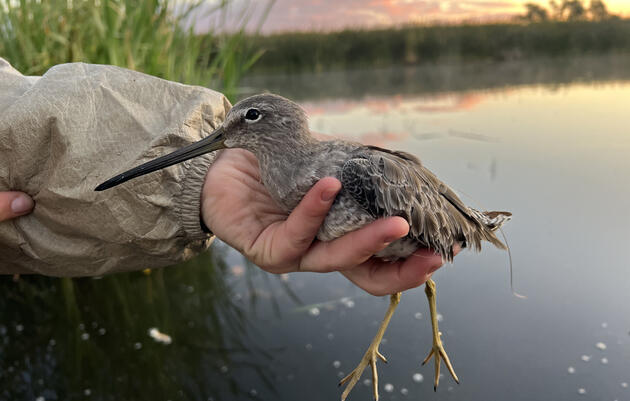Xerónimo Castañeda was named director of Audubon California's Working Lands Program in April of this year, but he already had deep experience leading our work on Central Valley farms and ranches, particularly preserving nesting land for the Tricolored Blackbird.
What was your professional migratory path? How did you land here?
I landed an internship as a nest searcher with Point Blue Conservation Science at their Palomarin field station in Marin County. Here, I was immersed in learning the ins and outs of coastal bird’s daily lives along with a handful of other recent graduates. I was invited back the following spring as a senior intern, then again as seasonal staff to lead their breeding bird program. In the off-seasons I moved around to work on various field projects throughout the US. This was awesome, but the time came where I needed more and wanted to learn new tools to take my passion for conservation to the next level. I was lucky to land a scholarship to pursue a graduate degree in natural resource management with an emphasis in wildlife at Humboldt State University. I joined Dr. Matt Johnsons’ habitat ecology lab. Here I examined the role Barn Owls have providing natural pest control in vineyards in Napa Valley. I studied their movement patterns to gain greater insight to how they used different habitat types and provided pest control services to grape growers. Studying owls in this working lands system further cemented my interest to work at the intersection of conservation and agriculture. When the project associate position to join Audubon’s Working Lands team was posted I knew that this is where I wanted to be. I was offered and took the role as project associate. I never looked back!
Describe a typical day at work for you. What will you oversee in your new position?
In my new role as the director of the Working Lands program I will continue to oversee our Tricolored Blackbird program, which includes protecting at risk nesting colonies in the Central Valley. I'll also co-lead new research using radio telemetry technology and maintain relationships and collaborate with other NGOs, agencies, private landowners, and farming operations to implement the Sustainable Groundwater Management Act (SGMA). We need to balance a lot of interests to ensure that community and environmental water needs are minimally impacted. We'll also work to coordinate land steward habitat incentive programs to support migratory shorebird habitat when and where it is needed most across the Valley and Delta, linking the programs work with advocacy strategies and policy that supports our conservation mission. It's also important that we explore new opportunities to engage youth, early career, and community folks to learn and grow their passion for conservation. A typical day for me involves lots of emails and meetings, many of which are with colleagues and external partners to identify conservation priorities, strategize steps on how to support those priorities, scope and apply for funding to implement projects, and then implement a project or program to move towards addressing our conservation priorities.
What should people know about conservation in California? `
Conservation in our state requires teamwork with many different partners, including many that folks may not think of when talking about conservation. We work with a lot of farmers and other agriculture groups to increase the pace and scale of bird conservation in California. It’s important to think globally and act locally, and if we plan to hit the state's goal of preserving 30 percent of our land as wildlife habitat by 2030, working with private landowners is an essential ingredient.
What is your favorite bird?
All birds are great, but the one that will always rise to the top is the Wrentit. I spent A LOT of time observing these birds and they are just fun to watch.
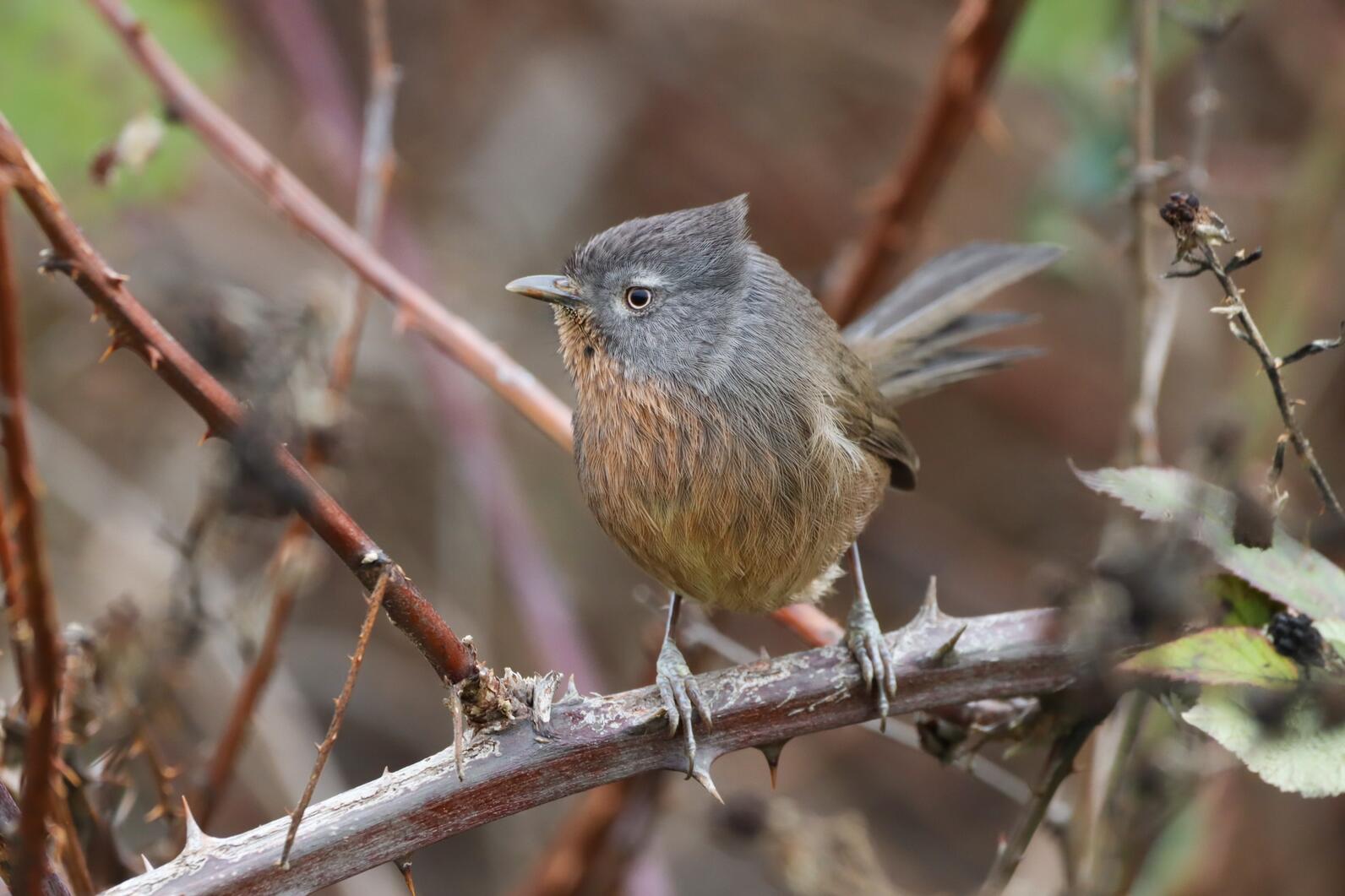
Support Bobcat Ranch
Your gift supports our work to develop & promote bird-friendly cattle ranching practices in CA and to protect and restore native grassland habitat for birds.

